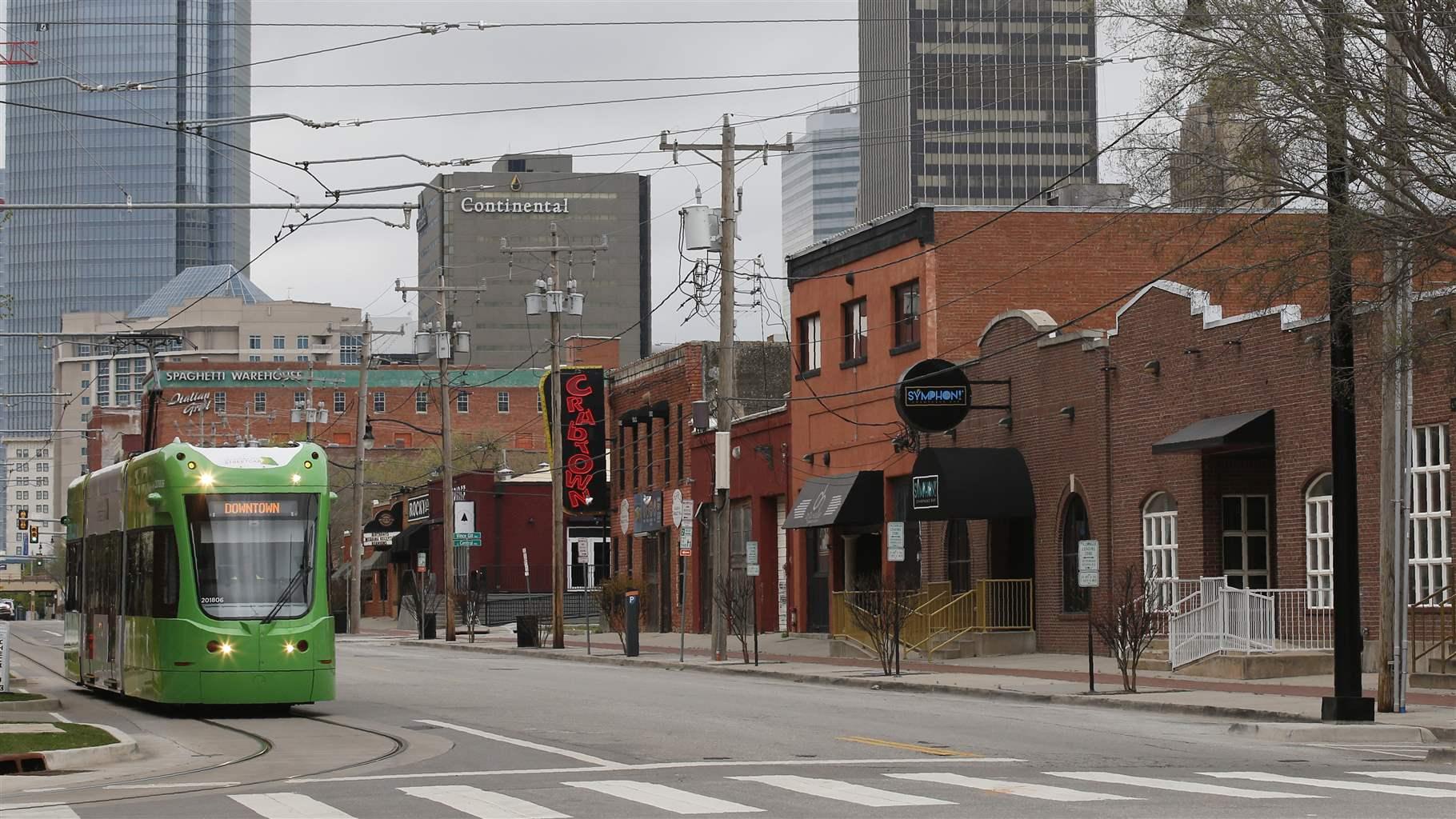How States Can Help Localities Better Respond to Pandemic-Related Fiscal Strains
Increasing local flexibility, such as authorization of rainy day funds, can make a difference

State policies and decisions play a critical role in how successfully local governments manage their budgets through economic downturns and other temporary setbacks. New York’s state government, for example, balanced its budget in part through substantial cuts in financial aid to local governments after the COVID-19 pandemic began last year.
This problem is not new: During and after the Great Recession more than a decade ago, states made deep reductions to aid to local governments. These cuts proved long-lasting and contributed to years of austerity at the local level; as of fiscal year 2016, seven years after the end of the recession, inflation-adjusted state aid to local governments such as municipalities and counties was still below pre-recession levels in 26 states.
Any reductions in aid from states are accompanied by a drop in tax collections that local governments typically face during downturns, especially those that rely on more volatile sources of revenue. For example, a survey by the National League of Cities published in August found that as a result of the pandemic, cities’ sales tax revenue fell by nearly 11% in fiscal 2020, the steepest drop in at least 25 years. At the same time, public health departments and other local agencies have needed more funding than usual to effectively spearhead the COVID-19 response.
States often reduce local support during downturns because they face their own budget challenges; cutting local aid also generally does not present the legal and practical challenges that states may confront when they try to cut in other areas. Still, even if their own finances are strained, state leaders can find creative ways to offer relief to localities.
One step that state leaders can take is to ensure that their policies support good fiscal management at the local level. For example, lawmakers in Oklahoma created the state’s second rainy day fund in 2016, a well-designed reserve that helped boost savings to record levels ahead of the pandemic. But the state does not authorize counties to establish their own rainy day funds, which are often governments’ best line of defense when recessions hit and revenue falls.
County budgets in Oklahoma are especially vulnerable to economic downturns because they rely heavily on sales taxes, a revenue source that has been hit particularly hard during this recession. According to 2017 U.S. Census Bureau data, counties in the state receive 42% of their total tax revenue from general sales taxes. Nationwide, only 17% of county revenue comes from these taxes.
Some Oklahoma lawmakers are recognizing the value in allowing counties to put money aside during good times to help manage inevitable economic fluctuations. A 2021 state legislative proposal would permit Oklahoma counties to establish rainy day funds for use during recessions and other fiscal emergencies. The proposal would allow them to adopt policies that mirror best practices identified in research by Pew. Those include setting savings targets based on how volatile local revenue may be, and deposit rules to ensure that temporary spikes in collections are put aside for future needs.
Permitting counties to establish reserves is just one example of how state policy can allow local leaders more flexibility to manage their own budgets. State leaders also can assist localities by reviewing state limitations on how they can raise revenue. Overly strict limitations can amplify fiscal distress, making it more difficult for counties and municipalities to weather a downturn and ensure sustainable budgets in the long term.
In addition, states can offer help to localities in fiscal distress through technical assistance and targeted aid. In the current recession, many local governments—as well as states—have turned to borrowing to balance budgets. Although taking on debt to pay for operating expenses is not ideal, states can help local governments reduce the long-term damage to their balance sheets. For example, South Carolina put in place a program last year that allows local governments to borrow on favorable terms through a program created to respond to pandemic-induced revenue declines. The localities have 10 years to pay back the money, and they do not have to begin paying back the principal until the sixth year.
Local governments’ fiscal challenges may just be beginning, even if COVID-19 vaccines start to curb the pandemic and restore the vitality of the American economy in the months ahead. Property taxes, many localities’ largest source of tax revenue, have held up reasonably well so far, in part because changes in property values won’t be reflected fully in local budgets for several years. But with declines in commercial property values possible across much of the country, some cities and counties may face depressed revenue collections for years to come. This risk doesn’t have to mean that localities will plunge into years of budget crises, provided that states act to help them mitigate the impacts of the recession.
Josh Goodman is a senior officer, Alexandria Zhang is an officer, and Airlie Loiaconi is a senior associate with The Pew Charitable Trusts’ state fiscal health project.














